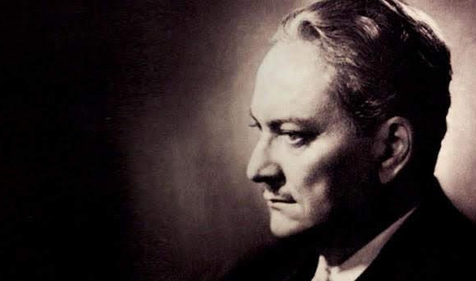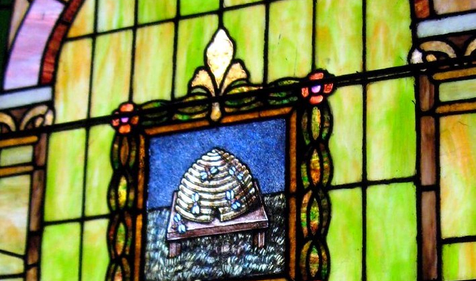This article details the lives of American explorers Meriwether Lewis and William Clark, their historic expedition, and their journey as Freemasons.
In 1803, President Thomas Jefferson completed the Louisiana Purchase, acquiring 828,000 square miles of land from France. The acquisition extended United States sovereignty across the Mississippi River and doubled the nation’s size. In short order, President Jefferson commissioned an expedition to explore and map the newly acquired territory. This mission was a significant milestone in American history, pivotal to the formation of the country. Given the intention of the adventure – to seek greater knowledge of the land, establish a relationship with neighboring peoples, and enhance our scientific understanding of the country – it is no surprise that two Freemasons were at the head of the quest: Meriwether Lewis and William Clark.
William Clark
In 1770, William Clark was born to a Virginian family, the ninth of ten children. His family moved to pre-statehood Kentucky in 1785. Young William did not receive a formal education but was tutored at home like many children at the time. During his time in Kentucky, his older brothers shared their military training with young William to teach him wilderness survival skills. In 1789, William volunteered to join a local militia force, keeping a detailed journal of the expedition, a practice he would continue for the remainder of his life. Enlisting was a pivotal moment, as it set young William on a trajectory of service to his country for life and land him a spot in one of the most extraordinary ventures in history.
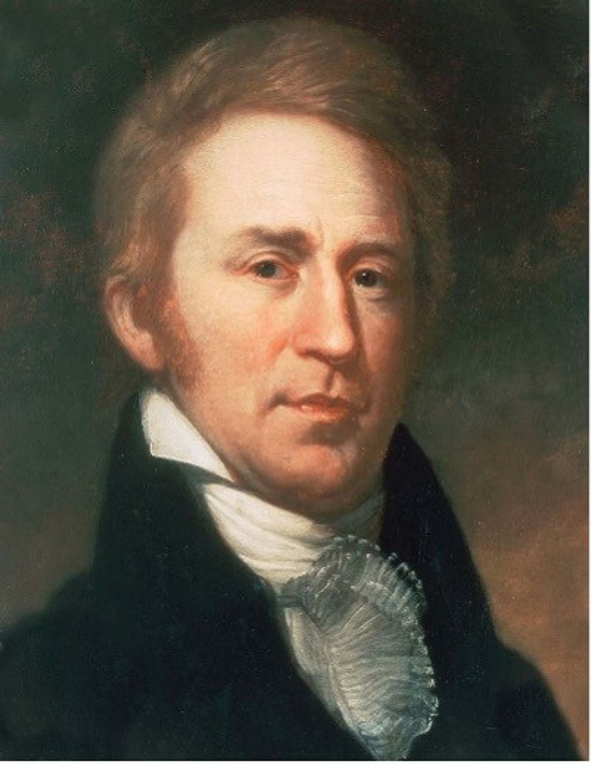
Meriwether Lewis
On August 18, 1774, Meriwether Lewis was born in Virginia before his family moved to Georgia in his youth. Exploring the shores of the Broad River, he became interested in nature and survival. Learning these wilderness skills was his only education until he turned 13, when he began receiving a private education. As a teen, he enlisted in the Virginia Militia and quickly took to military life, rising the ranks to become a captain in the United States Army in 1800. While at this post, he met fellow captain and future exploration partner William Clark.
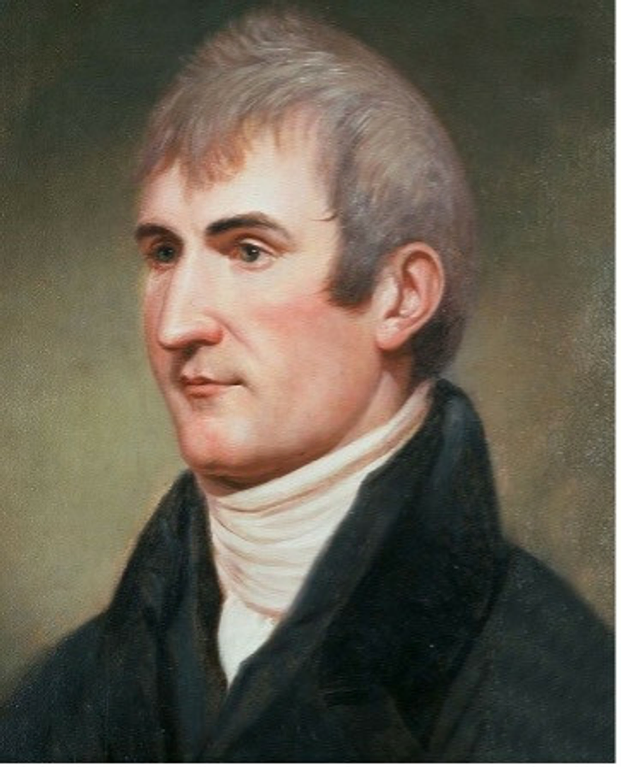
Corps of Discovery Expedition
On April 1, 1801, President Jefferson appointed Captain Lewis as Secretary to the President. The two knew each other through the Virginia community in Albemarle County. Following the Louisiana Purchase, Jefferson desired to explore the United States’ newly acquired territory, determine a practical route across the continent, and extend America’s presence before other nations could establish claims in the region.
The Corps of Discovery was created to complete this task, consisting of U.S. Army and civilian volunteers. Given his renowned frontier and survival skills, Lewis became the primary candidate to lead this arduous mission. Amidst the mountain logistics and preparation, Lewis named his good friend William Clark to co-captain this initiative. The campaign also sought scientific and economic gains by studying the plants, animal life, and geography of the territory and establishing trade with local Native American tribes.
The Corps of Discovery Expedition began on August 31, 1803, after months of preparation and delays. The company’s keelboat was put to water in the Ohio River with a crew of 11. The journey took three years, covering 8,000 miles westward and back across the vast and varied American landscape, including the Continental Divide of the Americas.
In September 1806, the expedition, which would come to be known as the “Lewis and Clark Expedition,” returned to St. Louis to report its findings. They had successfully explored and produced the first accurate maps detailing the geography of the Northwest – about 140 maps in all. They recorded natural resources and plants that had been previously unknown to Euro-Americans and were the first Americans to see Yellowstone, enter Montana, and officially document these regions. The Corps of Discovery encountered over 70 Native American tribes, establishing trade and diplomacy with dozens of indigenous nations. They kept journals describing over 200 new plant and animal species, contributing mightily to Euro-American understanding of the country’s natural resources.
Legacies
A year after the expedition concluded, President Jefferson appointed Clark as the brigadier general of the militia in the Louisiana Territory and the U.S. agent for Indian affairs. Clark established his offices in St. Louis, Missouri, where he would live for the rest of his life. After years crossing the country, Clark was well suited to be the federal government's chosen diplomat with Native Americans. Clark would spend much of his life occupied with Native American affairs and be appointed the territorial governor of Missouri by President James Madison. After decades of service to the United States and Missouri in particular, he passed away on September 1, 1838, at age 68. He was mourned by the people of St. Louis, as reflected by his funeral procession stretching for over a mile.
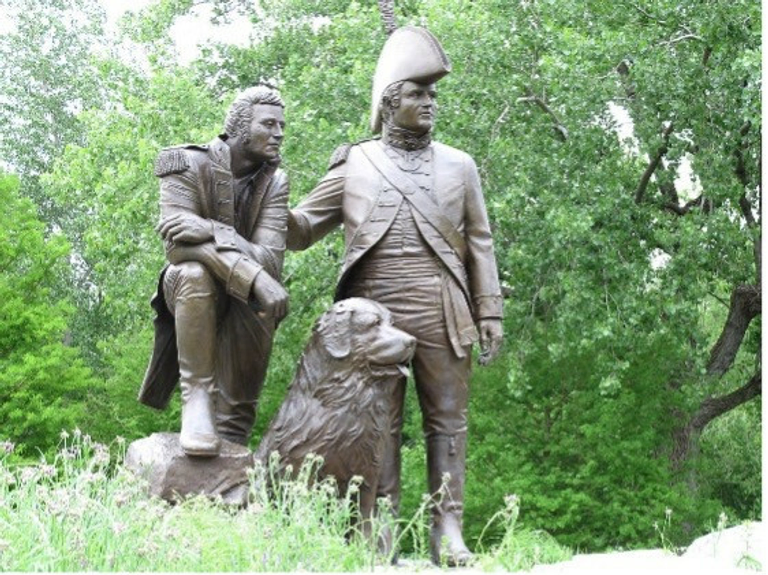
Like Clark, Meriwether Lewis settled in St. Louis in 1807 after President Jefferson appointed him governor of the Louisiana Territory. During his tenure, he established the first laws in the Upper Louisiana Territory while working to further President Jefferson's mission to build the fur trade. He amassed considerable debt over the next couple of years, giving rise to speculation about the cause of his death, with some suspecting suicide and others murder. What is known is that Lewis was found shot near present-day Hohenwald, Tennessee.
Freemasonry
Both men were practicing Freemasons during their lives. Lewis was particularly active for years, joining the fraternity as a young man. He was initiated, passed, and raised in the Door To Virtue Lodge No. 44 in Albemarle, Virginia, in 1797. Later, while holding his position as Governor in 1808, he and several acquaintances submitted a petition to the Grand Lodge of Pennsylvania requesting dispensation to establish a lodge in St. Louis. Lewis was subsequently made the first Master of the proposed Lodge, which was warranted as Saint Louis Lodge No. 111 on September 16, 1808. Lewis was passionate about the Masonic community and worked with Senior Warden Thomas Fiveash Riddick and Junior Warden Rufus Easton to raise Freemasonry's profile throughout Missouri.

As it happens, William Clark became a Freemason two days after Saint Louis Lodge No. 111 was established. The only record of his membership is the traveling certificate Saint Louis Lodge No. 111 issued him on September 18, 1809.
Today, both Brothers stand as symbols of American ingenuity, curiosity, and connection to the land. As Scottish Rite Masons, Devotion to Country is one of the core values we harbor within our hearts. These two men genuinely embody this value and the core tenants of Freemasonry through their bravery and dedication to education, exploration, and to achieving a better understanding of the world around us and our place within it.
Enjoyed this article? Be sure to visit the Scottish Rite Masonic Museum & Library’s Hall of Fame exhibition. Opening November 1, 2021, the exhibition will feature select artifacts and share stories from both notable and everyday Americans who helped shape and build Freemasonry in the United States. Stop by in-person or view online to learn more about these extraordinary figures, including Lewis & Clark.
Related Stories
Discover additional Scottish Rite blogs and news on this topic.
-
A Jolly Masonic Mug
History
Read More about A Jolly Masonic Mug
-
Manly P. Hall: Philosopher, Mystic, and Freemason
Famous Masons
Read More about Manly P. Hall: Philosopher, Mystic, and Freemason
-
What Does the Beehive Mean in Freemasonry?
Degrees
Read More about What Does the Beehive Mean in Freemasonry?


